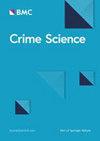Crime script analysis for adult image-based sexual abuse: a study of crime intervention points for retribution-style offenders
IF 3.1
Q1 CRIMINOLOGY & PENOLOGY
引用次数: 0
Abstract
Objective This research uses crime scripts to understand adult retribution-style image-based sexual abuse (RS-IBSA) offender decision-making and offending in offline and online environments. We explain the crime-commission process of adult RS-IBSA and identify crime intervention points at eight crime script stages. Methods Publicly released court transcripts of adult RS-IBSA prosecution cases (n = 18) in New Zealand from 2015 to 2018 were utilised to examine the crime-commission process of adult RS-IBSA. We analysed the court transcripts thematically at offence-level prior to constructing the crime scripts. Findings The study identified four types of adult RS-IBSA acts including the non-consensual dissemination of a victim’s intimate images, violent cyber sextortion, covert intimate photography, and unauthorised access of a victim’s phone/media. From our analysis, we identified three script tracks and constructed three distinct crime scripts: (1) threats, sextortion and dissemination; (2) unauthorised access of a victim’s mobile device and dissemination; and (3) covert intimate filming. We highlight areas for potential intervention for law enforcement agencies and policy makers to increase deterrence and personal security in online and offline spaces. Conclusion Adult RS-IBSA occurs in a range of dating and domestic contexts. This study develops crime scripts for adult RS-IBSA and advances our understanding of how the Internet/smartphones/digital media translates into virtual crime scenes with opportunities for maximum harm infliction. We offer several policy implications including revising current RS-IBSA legislation and supporting law enforcement agencies with policing online and offline intimate relationship spaces through situational prevention.成人图像性虐待犯罪脚本分析:报应型罪犯犯罪干预点研究
目的 本研究使用犯罪脚本来理解成人报应式图像性虐待(RS-IBSA)犯罪者在离线和在线环境中的决策和犯罪。我们解释了成人 RS-IBSA 的犯罪委托过程,并确定了八个犯罪脚本阶段的犯罪干预点。方法 我们利用 2015 年至 2018 年新西兰公开发布的成人 RS-IBSA 起诉案件的法庭记录(n = 18)来研究成人 RS-IBSA 的犯罪委托过程。在构建犯罪脚本之前,我们从犯罪层面对法庭记录进行了专题分析。研究结果 本研究确定了四种类型的成人 RS-IBSA 行为,包括未经同意传播受害者的私密图像、暴力网络短信息勒索、隐蔽性私密摄影以及未经授权访问受害者的电话/媒体。通过分析,我们确定了三个脚本轨迹,并构建了三种不同的犯罪脚本:(1)威胁、色情勒索和传播;(2)未经授权访问受害者的移动设备和传播;以及(3)隐蔽性私密拍摄。我们强调了执法机构和政策制定者可能采取干预措施的领域,以增强在线和离线空间的威慑力和人身安全。结论 成人 RS-IBSA 发生在一系列约会和家庭环境中。本研究为成人 RS-IBSA 开发了犯罪脚本,并加深了我们对互联网/智能手机/数字媒体如何转化为虚拟犯罪场景,从而有机会造成最大伤害的理解。我们提出了一些政策影响,包括修订现行的 RS-IBSA 立法,支持执法机构通过情景预防来维持在线和离线亲密关系空间的治安。
本文章由计算机程序翻译,如有差异,请以英文原文为准。
求助全文
约1分钟内获得全文
求助全文
来源期刊

Crime Science
Social Sciences-Cultural Studies
CiteScore
11.90
自引率
8.20%
发文量
12
审稿时长
13 weeks
期刊介绍:
Crime Science is an international, interdisciplinary, peer-reviewed journal with an applied focus. The journal''s main focus is on research articles and systematic reviews that reflect the growing cooperation among a variety of fields, including environmental criminology, economics, engineering, geography, public health, psychology, statistics and urban planning, on improving the detection, prevention and understanding of crime and disorder. Crime Science will publish theoretical articles that are relevant to the field, for example, approaches that integrate theories from different disciplines. The goal of the journal is to broaden the scientific base for the understanding, analysis and control of crime and disorder. It is aimed at researchers, practitioners and policy-makers with an interest in crime reduction. It will also publish short contributions on timely topics including crime patterns, technological advances for detection and prevention, and analytical techniques, and on the crime reduction applications of research from a wide range of fields. Crime Science publishes research articles, systematic reviews, short contributions and theoretical articles. While Crime Science uses the APA reference style, the journal welcomes submissions using alternative reference styles on a case-by-case basis.
 求助内容:
求助内容: 应助结果提醒方式:
应助结果提醒方式:


